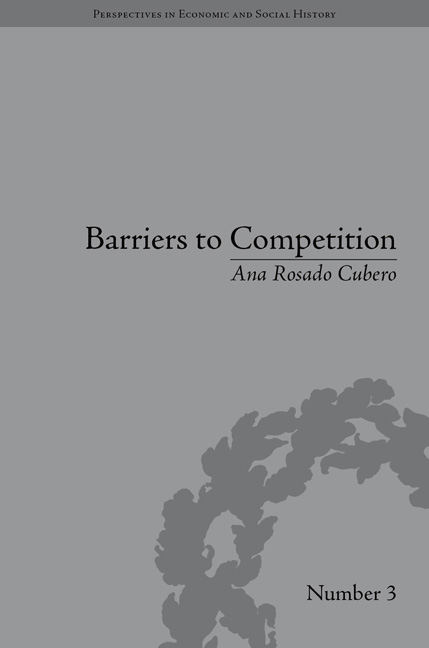Book contents
- Frontmatter
- CONTENTS
- Dedication
- Acknowledgements
- Introduction
- 1 Imperfect Competition in Economic Theory Before 1956
- 2 Barriers to Entry: the Late 1950s and the 1960s
- 3 The Harvard and Chicago Schools: Two Ways of Studying Barriers to Entry
- 4 Barriers to Entry in the 1970s
- 5 Barriers to Entry in the 1980s
- 6 Barriers to Entry: Current Analysis
- Conclusion
- Appendix: Tables
- Notes
- Works Cited
- Index
Introduction
- Frontmatter
- CONTENTS
- Dedication
- Acknowledgements
- Introduction
- 1 Imperfect Competition in Economic Theory Before 1956
- 2 Barriers to Entry: the Late 1950s and the 1960s
- 3 The Harvard and Chicago Schools: Two Ways of Studying Barriers to Entry
- 4 Barriers to Entry in the 1970s
- 5 Barriers to Entry in the 1980s
- 6 Barriers to Entry: Current Analysis
- Conclusion
- Appendix: Tables
- Notes
- Works Cited
- Index
Summary
This book is part of a long established sub-discipline of economics, the history of the development of economic ideas and tries to show how the importance of non competitive behaviour of the firms that are analysed through economic models by American researchers, the Federal Trade Commission and the universities, and what economical analysts of Europe should learn about a stimulating American controversy.
The Sherman Law has been in force in the United States since 1890, the main goal of this Law is to outlaw every contract, combination or conspiracy in restraint of trade, as well as to protect industrial markets from monopolization and treat violations of it as crimes. The American Congress gave the federal courts adequate power to distinguish between fair cooperation and illegal agreements. The American courts interpret Section 5 as applicable to anything that is a Sherman Act or Clayton Act violation. The Federal Trade Commission also applies Section 5 to consumer protection issues, such as misleading advertising and fraud.
In the twentieth century no thought on competition had the same meaning for any particular group. Economists and Lawyers speak different languages, and meeting points in the realm of antitrust during the past century have been few. Industrial Organization tried to offer worthwhile tools to judges, courts, defendants and plaintiffs, but there it is necessary to build bridges.
- Type
- Chapter
- Information
- Barriers to CompetitionThe Evolution of the Debate, pp. 1 - 16Publisher: Pickering & ChattoFirst published in: 2014

